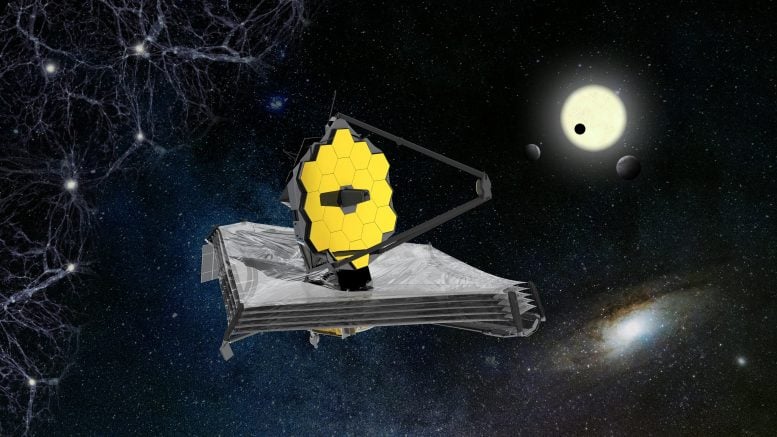
The James Webb Space Telescope is a space observatory to see further into the Universe than ever before. It is designed to answer outstanding questions about the Universe and to make breakthrough discoveries in all fields of astronomy. Webb will observe the Universe’s first galaxies, reveal the birth of stars and planets, and look for exoplanets with the potential for life. Credit: ESA/ATG medialab
As the Webb team continues to make progress in aligning the telescope, other successful activities include the calibration of the NIRISS filter wheel and pupil wheel tuning for NIRCam. There are hundreds of activities like these planned during the commissioning process, and each is as important as the next to ensure that Webb can achieve its ambitious science goals. One such goal – detecting the earliest galaxies – also requires a lot of planning and theory to prepare for the observations. L.Y. Aaron Yung, a postdoc at NASA’s Goddard Space Flight Center, tells us more about the important theoretical work that helps plan for and then analyze galaxy surveys:
“This summer, Webb will start searching for galaxies in the distant universe. These highly anticipated observations are the key to unlocking the secrets in galaxy evolution and our universe’s history. Depending on the specific science goal of an observing program, the best-suited survey configurations can vary a lot.
“For instance, galaxy surveys going after the faintest and most distant galaxies require long exposure times (e.g., NGDEEP, PRIMER), but surveys for large-scale cosmological structure would require large survey areas (e.g., COSMOS-Web). Inputs from physically motivated simulations are essential to developing optimal observing strategies to achieve the specific scientific goals.
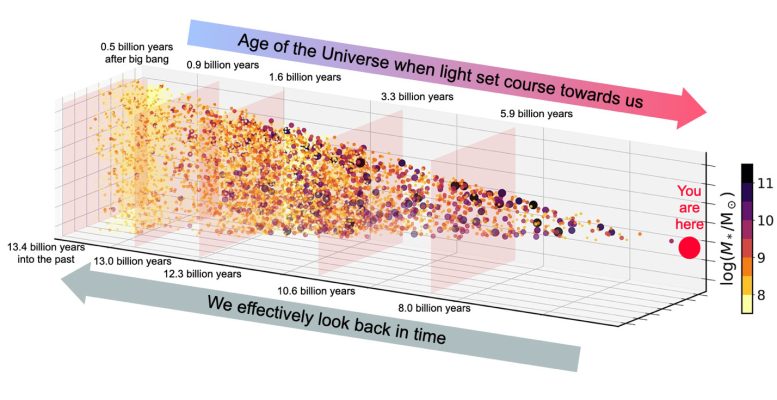
Side-view of the simulated universe as presented in the “Semi-analytic forecasts for JWST” project (Yung et al., in preparation). Each data point represents a galaxy. Larger and darker data points represent galaxies with more mass, and vice versa. Credit: Yung et al.
“To create a simulated universe, we first lay the foundation with dark matter concentrations, or halos, extracted from cosmological simulations. Dark matter accounts for 85% of the matter in the universe and has a dominant effect on the spatial distributions of galaxies across the universe. We then simulate the galaxies forming inside these dark matter halos based on astrophysical processes we learned from past observations.
“This figure illustrates an example of a portion of a simulated universe arranged in the shape of a cone traced by our sightlines. Because light travels at a finite speed, the light that originated in the early universe has traveled billions of years before finally reaching us today. This effectively allows us to look back in time and see the universe billions of years into its past.
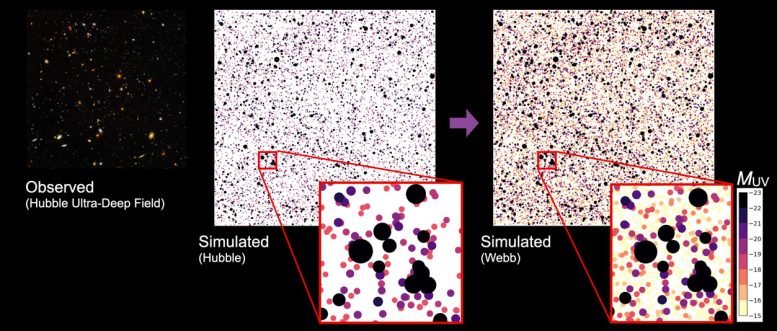
View of the simulated universe from the front, just like the way we see the universe. The simulated field has perimeters similar to the Hubble Ultra-Deep Field. We also show a comparison of the simulated field at depths reachable by Hubble (left) and Webb (right). Credit: Yung et al.
“Our simulated universe serves as the basis to create mock observing fields that are statistically similar to the observed universe. The physically motivated models have been shown to match the galaxies observed by Hubble (e.g., the Hubble Ultra-Deep Field), and we use them to provide predictions for galaxies beyond Hubble’s capabilities.
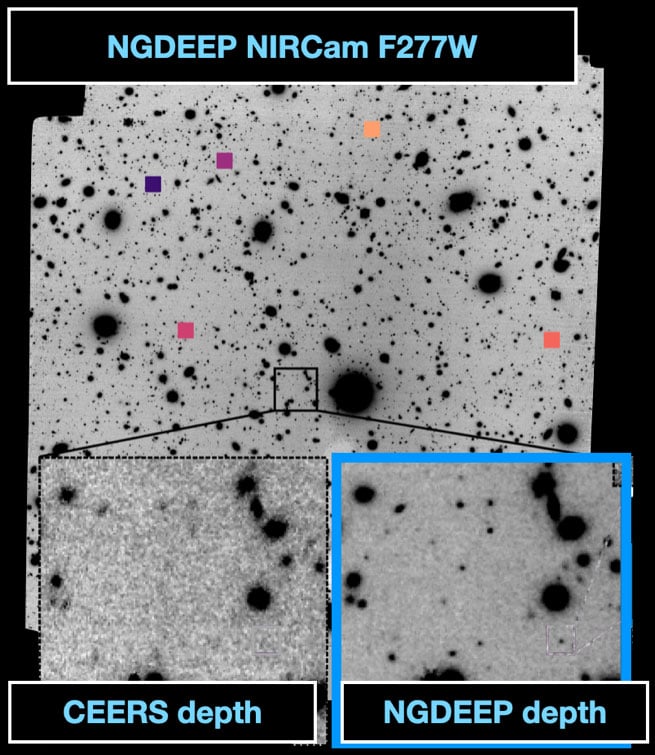
Synthetic image of an ultra-deep galaxy survey, with a side-by-side comparison at depths expected to be reached by CEERS (left) and NGDEEP (right). Credit: Courtesy of Micaela Bagley
“We process the simulated universe further into realistic mock images by adding effects from scientific instruments and survey configurations. These data products are used to support the development of the Webb data reduction pipeline and will inform the interpretation of future observations when they become available.
“Webb will detect, for the first time in human history, galaxy populations forming shortly after the big bang, and theory is paving the way for the search. In turn, Webb observations will refine our understanding of galaxies and the history of our universe.”
– Dr. L. Y. Aaron Yung, NASA postdoctoral program fellow, NASA Goddard
As Webb continues its commissioning activities on the way to normal operations, we will start to preview anticipated science on this blog in addition to providing updates on the latest observatory activities.
Written by:
- Jonathan Gardner, Webb deputy senior project scientist, NASA’s Goddard Space Flight Center
- Alexandra Lockwood, project scientist for Webb science communications, Space Telescope Science Institute



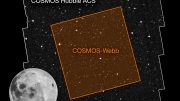
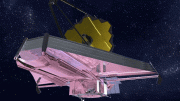

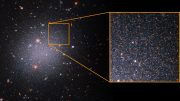
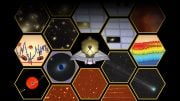
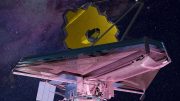
Galaxies’ motion is defined by Hubble’s law.This is motion of a galaxy relative to any other.But,actual motion of galaxy is not in radial direction from origin or starting point of big bang,the mighty explosion.The reason lying behind is that this motion is modified by an angle imposed due to dark energy due to galaxy rotation with respect to other galaxies as a function of time.Rotation causes acceleration in the galaxie’s motion.Another fact is that,galaxies have lateral motion,that is from the origin of big bang their direction of motion is inclined with each other by certain angle,which differs for any set of two galaxies.So,this is a typicaĺ prblem obstacles to find out the origin of big bang.However,to trace early galaxies is not difficult by advanced telescope like JWST.
Galaxies’ motion is defined by Hubble’s law.This is motion of a galaxy relative to any other.But,actual motion of galaxy is not in radial direction from origin or starting point of big bang,the mighty explosion.The reason lying behind is that this motion is modified by an angle imposed due to dark energy due to galaxy rotation with respect to other galaxies as a function of time.Rotation causes acceleration in the galaxie’s motion.Another fact is that,galaxies have lateral motion,that is from the origin of big bang their direction of motion is inclined with each other by certain angle,which differs for any set of two galaxies.So,this is a typicaĺ prblem obstacles to find out the origin of big bang.However,to trace early galaxies is not difficult by advanced telescope like JWST.
These early first galaxies can be approched by measuring distant galaxies through conventìonal method using red shift of light,added with measurement of dark energy(or accumulated dark matter halo)around super massive black hole at the center of galaxy.By gradual process of careful propagation twords the origin of big bang through these measurements goal can be achived,keeping a view to lateral motion.
Galaxies’ motion is defined by Hubble’s law.This is motion of a galaxy relative to any other.But,actual motion of galaxy is not in radial direction from origin or starting point of big bang,the mighty explosion.The reason lying behind is that this motion is modified by an angle imposed due to dark energy due to galaxy rotation with respect to other galaxies as a function of time.Rotation causes acceleration in the galaxie’s motion.Another fact is that,galaxies have lateral motion,that is from the origin of big bang their direction of motion is inclined with each other by certain angle,which differs for any set of two galaxies.So,this is a typicaĺ prblem obstacles to find out the origin of big bang.However,to trace early galaxies is not difficult by advanced telescope like JWST.
These early first galaxies can be approched by measuring distant galaxies through conventìonal method using red shift of light,added with measurement of dark energy(or accumulated dark matter halo)around super massive black hole at the center of galaxy.By gradual process of careful propagation twords the origin of big bang through these measurements goal can be achived,keeping a view to lateral motion.
By this process,though origin of thè big bang is not reachable,no difficulty presents to obtain early first galaxies,even factor due to lateral motion is ignored.This is a successful hit and trial method in vast universe.